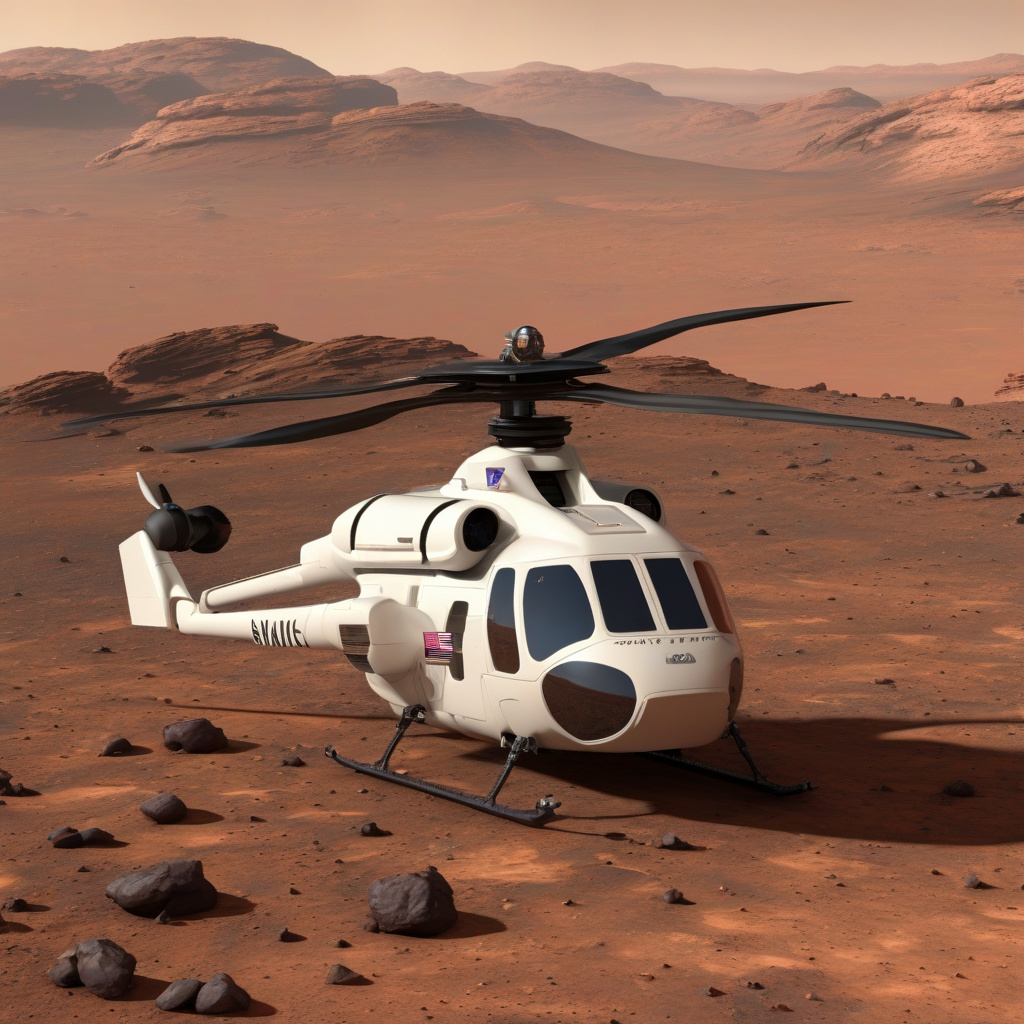Nighthawk: NASA Plans Massive Mars Helicopter to Scan Ancient Volcanoes for Life
From Ingenuity’s flights, it’s clear that helicopters offer a new way to explore Mars. Planetary exploration has reached new heights with NASA’s ambitious plan to send a groundbreaking helicopter to the red planet. The proposed mission, known as Nighthawk, aims to revolutionize our understanding of Mars by scanning ancient volcanoes for signs of life.
The concept of using helicopters for Mars exploration isn’t entirely new. NASA’s Ingenuity helicopter has already made history with its successful flights on the Martian surface, showcasing the potential of aerial vehicles in conducting scientific research on other planets. Building on this success, Nighthawk is set to take the exploration capabilities to the next level.
One of the key objectives of the Nighthawk mission is to scan ancient volcanoes on Mars for potential signs of life. Volcanic regions are of particular interest to scientists as they offer insights into the planet’s geological history and potential habitability. By deploying a sophisticated suite of instruments, including high-resolution cameras and advanced sensors, Nighthawk will be able to conduct detailed surveys of these volcanic sites, searching for any traces of microbial life or organic compounds.
The use of a helicopter for this mission provides several advantages over traditional rovers or landers. Helicopters can cover a much larger area in a shorter amount of time, allowing for more comprehensive surveys of the Martian surface. They can also access hard-to-reach or hazardous terrain that would be challenging for wheeled vehicles to navigate. This increased mobility and flexibility will be crucial in the search for signs of life on Mars.
Furthermore, the Nighthawk helicopter is equipped with state-of-the-art autonomous navigation capabilities, allowing it to fly independently and make real-time decisions based on the data it collects. This level of autonomy is a significant advancement in planetary exploration and demonstrates NASA’s commitment to pushing the boundaries of what is possible in space exploration.
In addition to its scientific objectives, the Nighthawk mission also has broader implications for future Mars exploration efforts. By demonstrating the effectiveness of helicopters in conducting detailed surveys and scientific research, NASA is paving the way for more advanced aerial missions in the future. Helicopters could play a crucial role in upcoming missions to Mars, enabling scientists to explore new areas and gather data that would be inaccessible with traditional rovers.
As we look ahead to the future of Mars exploration, the Nighthawk mission stands out as a testament to human ingenuity and innovation. By leveraging cutting-edge technology and pushing the boundaries of what is possible, NASA is leading the way in unraveling the mysteries of the red planet. The successful implementation of the Nighthawk mission could have far-reaching implications for our understanding of Mars and the search for extraterrestrial life.
In conclusion, the Nighthawk mission represents a significant milestone in Mars exploration, showcasing the potential of helicopters in conducting scientific research on other planets. With its ambitious goals and groundbreaking technology, Nighthawk has the potential to revolutionize our understanding of Mars and pave the way for future exploration efforts. As we eagerly await the results of this groundbreaking mission, one thing is clear: the future of planetary exploration looks brighter than ever.
NASA, Mars, Nighthawk, Helicopter, Exploration











